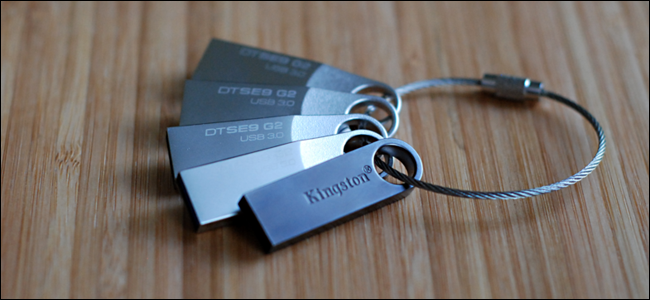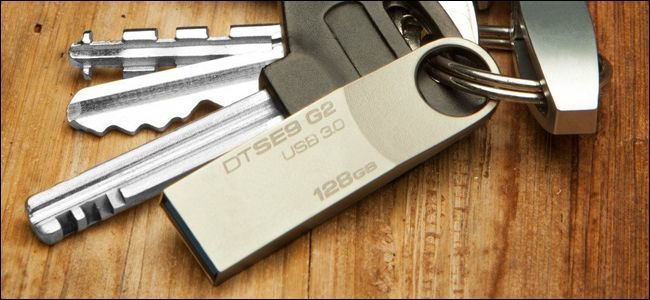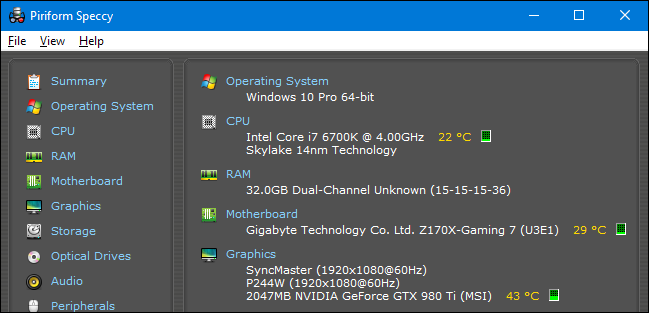If you're "the computer guy" (or girl) to your friends and family, you're probably asked to diagnose and fix their problems on a regular basis. If you can't stand to tell them to leave you alone, you might as well embrace your role and come prepared with one key ring full of flash drives to rule them all.
With a set of drives filled with portable versions of useful PC repair and maintenance programs, along with some bootable troubleshooting utilities, you'll be ready for just about any problem.
Step One: Grab Your Drive(s)
Any USB drive should work for this guide. You can fit most of the portable apps below on one single flash drive, though a few of the tools require a dedicated drive that you can boot from---this allows you to solve problems on computers that won't even turn on.
The best approach is probably to have a big, fast primary drive with most of the self-contained programs (and which you can also use for your own personal files), and a handful of small, cheap drives for the self-booting utilities.
We recommend Kingston's DataTraveler SE9 series. It comes with support for USB 3.0 ports for speedy operation on supported PCs, and its thick steel ring allows for the addition of multiple drives, so you just have one key ring to rule them all. At the time of writing, the 64GB version is a very reasonable $27 on Amazon, and lower capacities for the self-booting tools are nice and cheap as well.
Step Two: Gather Your Tools
Here are the tools we recommend for your ultimate key ring, and what they do. For now, you can just download all these to your PC; and then we'll add them to your key ring in the next step.
Google Chrome Portable: Because you don't want to use someone else's browser, do you? The link above is a modified version of Chrome that launches from any folder, updated with the latest stable release from Google.
Revo Uninstaller: This tool is a fast method for uninstalling applications, like the bloatware that tends to cling around on new machines. It has a few useful extras, like a "Hunter Mode" that can uninstall programs just by pointing at their window---great for that crapware you aren't sure the name of. Best of all, it can also clean up those annoying leftover directories in places like the main programs folder and the startup menu.
Avira Rescue System: a self-booting drive tool that can clean viruses, malware, and other nasty stuff off of other operating systems. This one will require its own USB drive on your key ring. Make sure to update it periodically with the official freeware tool---instructions for creating your own USB rescue drive are at the link.
CrystalDiskInfo: A tool for checking the health and longevity of hard drives. Handy if you think the storage on a PC is failing.
Speccy: An easy way to quickly see all the technical specifications of a computer, including non-obvious stuff like the number of RAM DIMMs installed and the number of expansion slots used.
Process Explorer: A tool that helps you identify running processes. Handy for identifying running malware and other bad stuff.
AdwCleaner: A tool that seeks out and destroys adware---those annoying toolbars and pop-up menus that tend to install themselves when unknowing users download free programs that are bundled with all kinds of mildly malicious advertising. The program is a self-contained executable you can launch from a USB drive.
Peerblock: A tool for creating a quick firewall, selectively blocking incoming and outgoing traffic.
MBRtool: This isn't a standalone app, but a bootable tool that requires its own flash drive. Once you create it, you can pop the drive into any PC and boot from it to repair the master boot record, one of the most common causes of an OS boot failure.
HWMonitor: An easy way to inspect all kinds of esoteric hardware and settings that aren't normally visible in Windows, like all of the temperature and fan sensors on the motherboard. Especially handy if you're tuning a "Gaming" or performance PC.
Wireless Network Watcher: This program can show you all of the devices connected to your local network, including their IP addresses and MAC addresses. Very useful if something is giving you network issues, or you suspect someone's on the network when they shouldn't be.
WinDirStat: a disk analyzer and cleaner. Good for quickly finding big and unneeded files to free up space if your friend's hard drive is getting full. If you prefer a more graphical layout, SpaceSniffer is a good alternative (or addition).
NirSoft password recovery tools: this collection of programs is designed to recover usernames and passwords if no easy recovery option is available, like resetting via email. The various tools work on web browsers, wireless networks, Windows Protected Networks, and even remote desktop tools.
Hiren's Boot CD: an all-in-one package that includes a ton of tools for repairing and optimizing computers, all squeezed into a self-booting CD file. Don't let the title fool you, you can run it from a dedicated USB drive as well. (Note: this actually contains a number of the tools we've included in this guide, plus a lot more---but having your own versions of the tools on a non-bootable drive makes things a little easier, so we included them in this list anyway.)
ProduKey: another Nirsoft tool. This one helps you find Windows and other registration keys, in case you're unable to verify someone's legitimate copy, even from other PCs on the local network. It's a portable, all-in one application, but using its advanced functions requires a bit of command line use.
ShellExView: for cleaning all of that crap off the Windows right-click menu after you've gotten rid of the programs your friends shouldn't have downloaded.
BlueScreenView: this very useful tool will show you the results and minidump files behind the machines latest blue screen (of death) crashes. Much better than reaching for your phone camera in the five seconds the screen is up.
The Official Windows Recovery Drive: Lastly, don't forget that you can also create a USB recovery drive from within Windows---and if you frequently find yourself repairing someone's PC, it might be a good idea to do that once you've fixed their problem and gotten the computer into a working state. This will require its own flash drive.
Step Three: Create Your Drives
Gathering your tools is the arduous part---the rest is super easy. Plug in your big flash drive and just drag all the portable tools you downloaded over to it (preferably organized into folders, since many portable tools may create additional files the first time you start them up).
There are, however, a few tools on that list that require their own dedicated flash drives, so you can boot from them. That's where the "key ring" idea comes into play.
MBRTool comes as an installer, so you'll need to install it to your PC, then use the newly-installed app to create the bootable flash drive.
In order to burn Hiren's Boot CD and the Avira Rescue System onto their own flash drives, you'll need to grab their ISO files and use a tool called Rufus to "burn" it to a flash drive. Check out our guide to Rufus for more info on doing so---it says it's for Linux distributions, but it'll work for pretty much any ISO file you want to burn to a flash drive.
To create a Windows Recovery Drive, you can just follow these instructions.
When you're finished, you should have one awesome key ring with every tool you could possibly need to troubleshoot someone's computer. Feel free to mix and match and customize your drive however you like!
Image credit: Amazon, DiyDataRecovery, NirSoft








